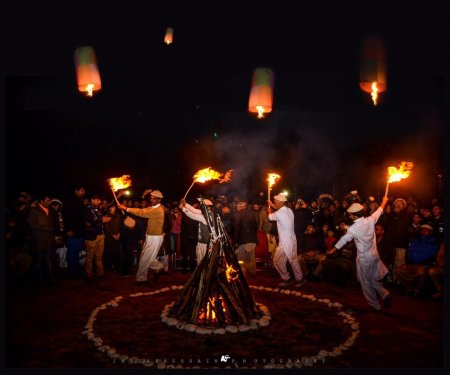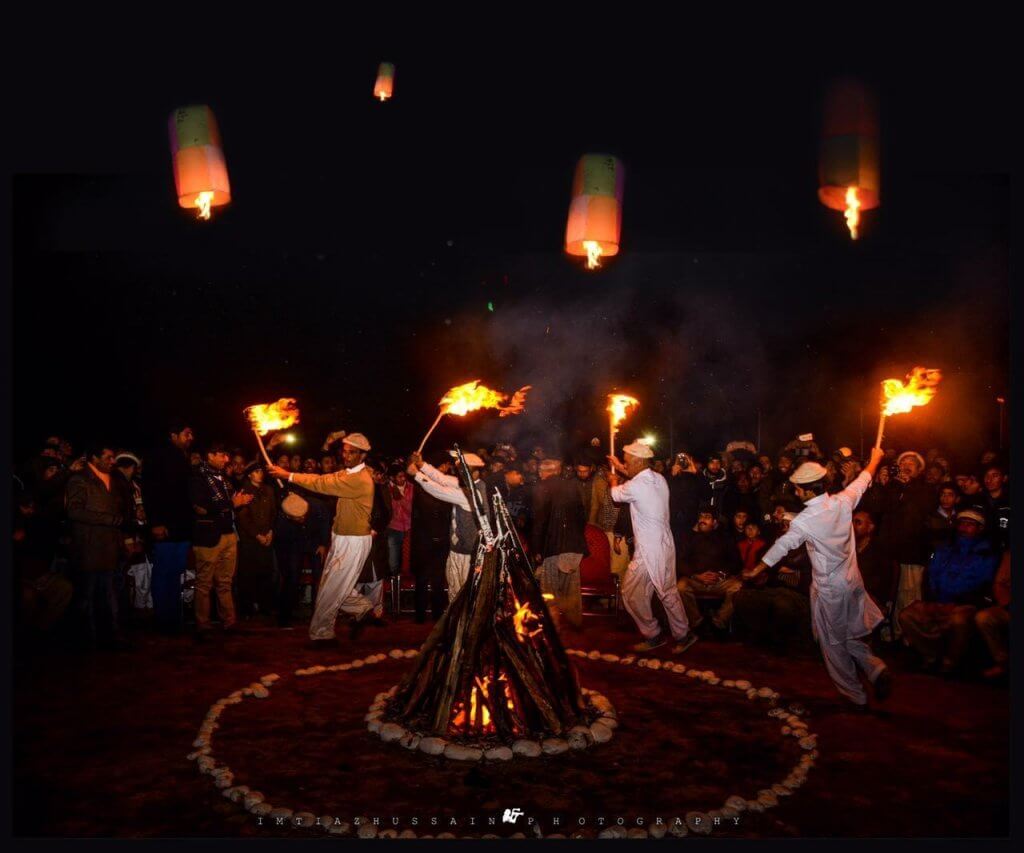Intangible Cultural Heritage of Gilgit Baltistan

By Nigah Zahra
The lush green forests, tantalizing lakes, and stunning sky-high jagged peaks of the Himalayas, Hindukush, and Karakoram mountain ranges in Gilgit Baltistan (GB) attract thousands of domestic and foreign tourists to this region. In 2019, over 200,000 tourists visited Gilgit Baltistan from all around the world. Tourism industry has promising growth prospects and potential for supporting livelihoods in this region.
However, with the developments in the tourism sector, the local customs, socio-cultural characteristics, and social life of GB have also been impacted. One of the adverse effects of mass tourism is that the area starts to lose its originality as it adapts to the tourist inflow. For instance, local ceremonies, entertainment activities, traditional architecture, and food, gradually dilute to meet the preferences and needs of the growing number of tourists. This blog expands on the function and importance of intangible cultural heritage for GB’s tourism industry.
In 2003, the Convention for the Safeguarding of Intangible Cultural Heritage (ICH) was drafted by UNESCO. ICH includes oral traditions, performing arts, social practices, rituals, festivals, music, food, and skills to produce traditional crafts among other areas. Each year cultural practices and expressions of intangible heritage from various countries are selected on merit and added to the official list.i These aspects are vital to retain the cultural identity, promotion of creativity, and preservation of cultural diversity.
In the era of globalization, many forms of the intangible cultural heritage of GB are at the risk of extinction. Over thirty languages are spoken by the natives of GB, none of them have ever been documented in the national census surveys of Pakistan. What is alarming is that these languages are categorized as ‘endangered’ in the Routledge’s Encyclopedia of World’s Endangered Languages. Domaaki (also known as Dawoodi), Wakhi, Gojri are included in this list. Lack of scripted literature is pushing many native languages towards extinction. Synergizing language related oral traditions such as Gilgiti folktales and songs with tourist-related activities can help in documenting and preserving these languages. It can also create a sense of connection and social cohesion between the tourists and the locals, while preserving these elements of intangible heritage.
Promotion of local festivals, performing arts, and crafts can not only add a new dimension to the tourists’ experience but also have great potential for these industries to reinforce each other. However, some guidance would be required to better market local crafts and performing arts for the touristic audience and create brands for different crafts, products, performing arts, and festivals. Activities already on the UNESCO’s ICH list include Chinese puppetry, Spanish flamenco dance, hawker centers in Singapore, bagpipe culture in Scotland, pottery in Turkey, among others can serve as examples.
Rama polo festival in GB can be promoted as one such tradition. It is a source of entertainment for seven days with a glorious display of traditional dances, music, folk tales, and handicrafts. The success of this festival in terms of attracting tourists exhibits the potential for local artists and skilled entrepreneurs to showcase their products. It can also help in improving the tourists’ perception about the region, while stimulating the local economy. However, there are very limited festivals that popular amongst the tourists.
Mayfang is a centuries old festival celebrated in Skardu. It is a three-day long festival which marks the end of the longest night of the year. The festival takes place in the Safaranga desert, where the locals dance, celebrate and rejoice while holding wooden fire torches. A similar festival is celebrated in Scotland named “Beltane”, which can serve as a good example for preserving and promoting ICH through tourism. In addition to the festivals, activities and spaces that bring the local cuisine, crafts, music, and hospitality together can be synergized to promote sustainable tourism in the region.
The incorporation of Intangible Cultural Heritage in tourism has a strong economic potential. This approach would not only add to the tourist experience but also stimulate the economic and cultural domains of the region. In Scotland, Galgeal Trust was set up in the ’90s to impart skills to the marginalized people to inculcate a sense of purpose. Other models can be studied to integrate the facilities, tours, and other tourist-related activities with the intangible elements of the region. This will expand the tourist experience basket from just sightseeing to more meaningful experiences, while incentivizing the protection and promotion of local culture and traditions. An authentic intangible culture promotion can provide GB with a unique selling point in the competitive global tourism industry.
————————–
The writer is a student of Political Science at LUMS




